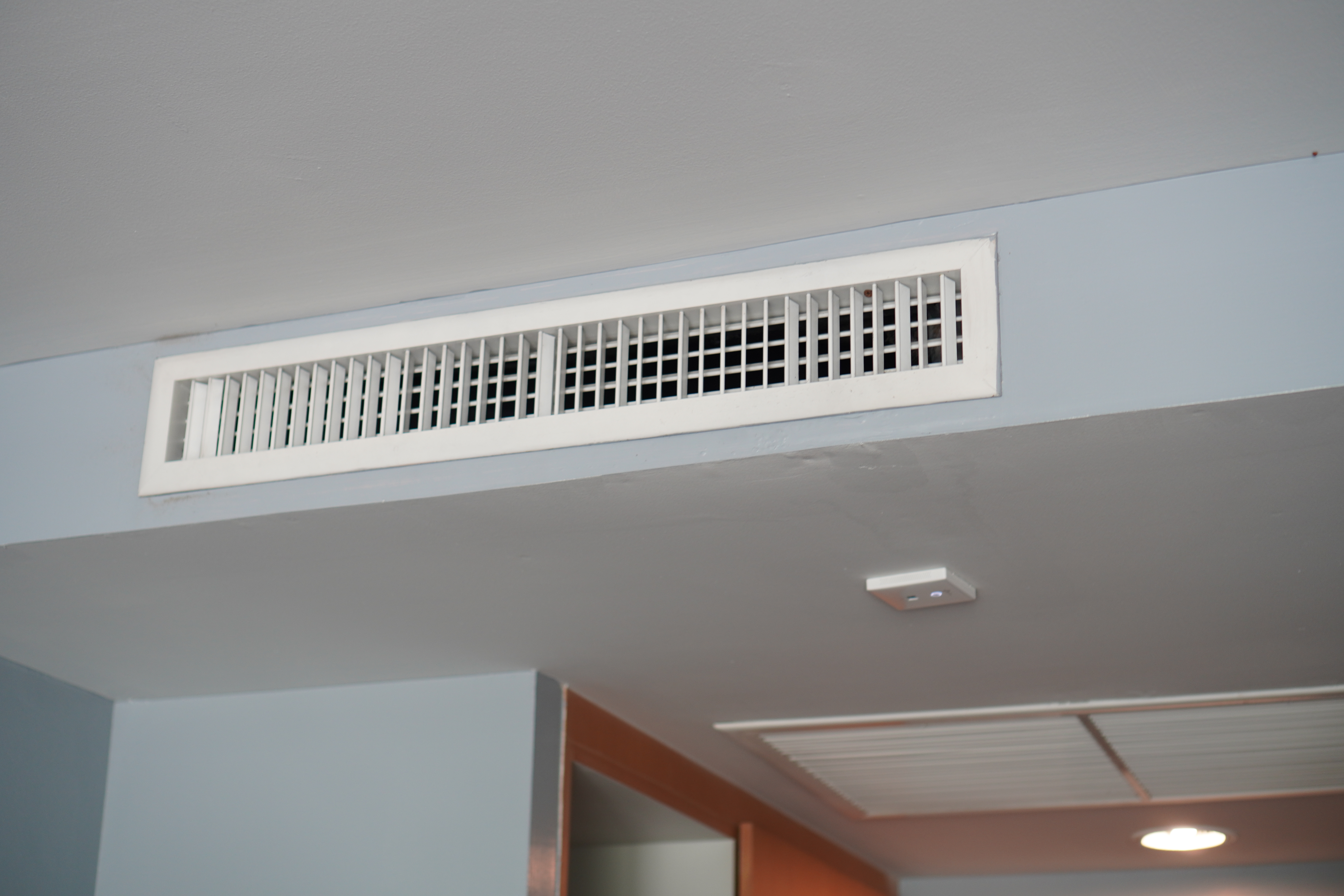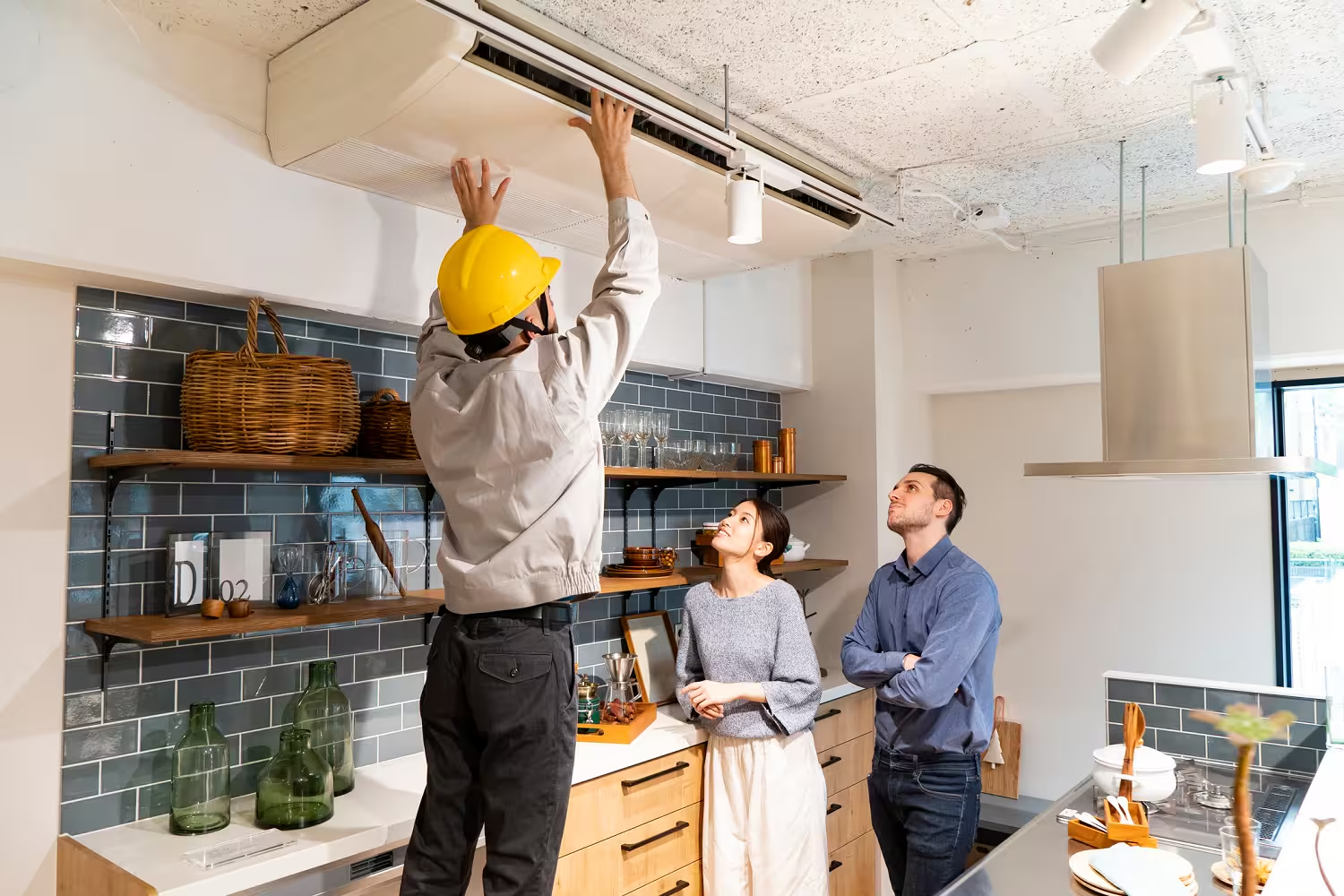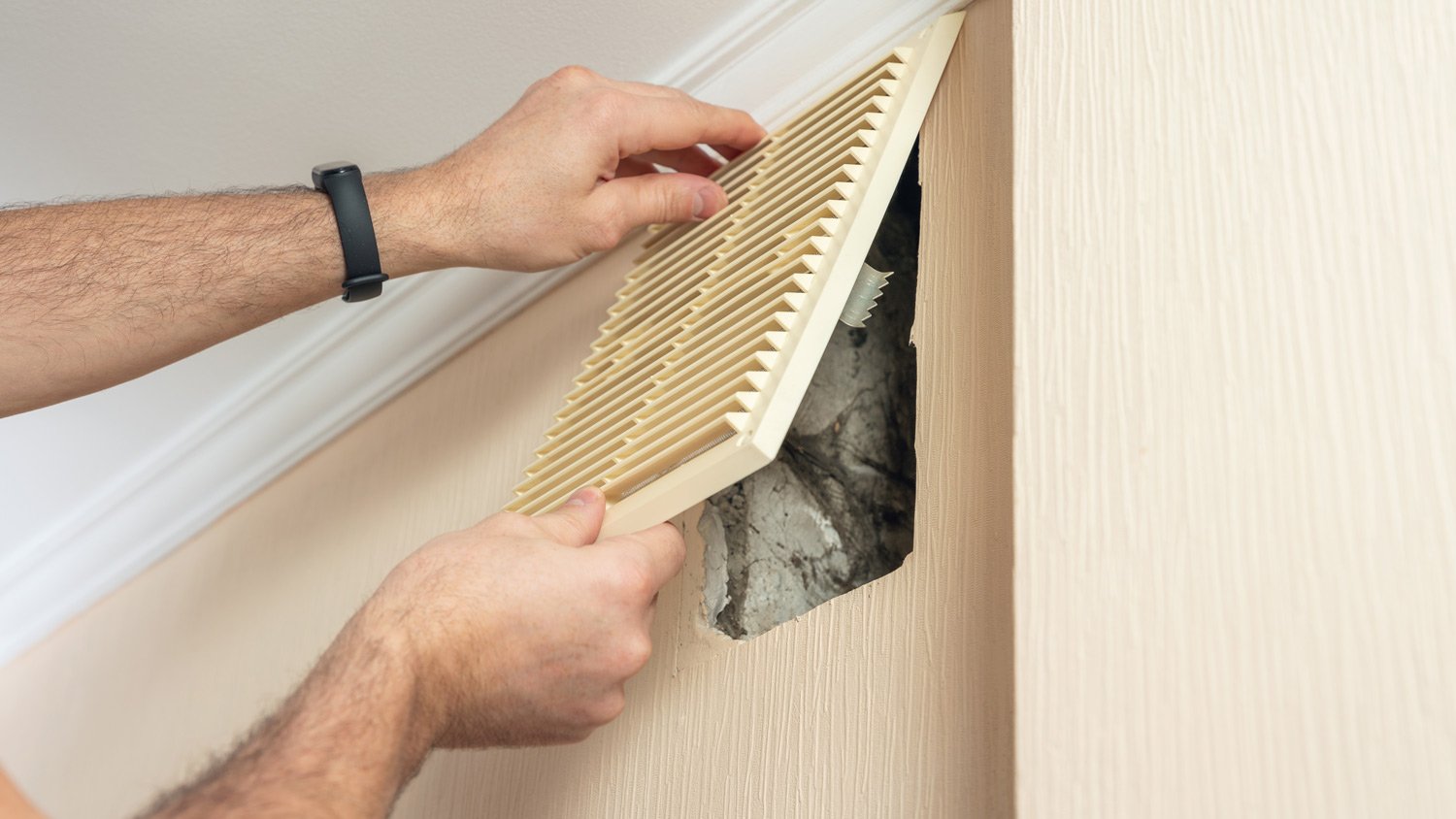
Whole-house air purifier costs depend on a variety of factors, including your home’s size and layout. The type of purifier you choose matters, too.
In-duct air purifiers keep odors from becoming overstaying house guests


Your air ducts distribute cooler air into your home and gather warmer air to recondition it.
Keeping your air ducts clean ensures your air conditioning operates efficiently.
In-duct air duct purifiers work by removing germs, mold, mildew, and bacteria from your air.
There are two kinds of air purifiers: UV and Ionization.
Along with purifiers, changing your air filters often ensures your air remains clean.
Your ductwork is your HVAC’s distribution system for pushing cool air into your home and removing old, warmer air. As such, keeping your air ducts clean ensures you breathe cleaner air. This is where in-duct air purifiers come to the rescue. We’ll cover the different kinds available, whether they work well, and other ways to clean your home’s air.

Your home’s HVAC system comes with air filters. Your air filters trap particles like dust, mold, mildew, and pet dander. However, air filters can only do so much; if you don’t change them out as directed, it could result in dirty ductwork. This is why air duct purifiers and air filters can be a smart one-two punch to keep your home’s air cleaner.
In-duct air purifiers provide another layer of protection by neutralizing odors, germs, dander, dust, and other particles you don’t want to breathe.
When shopping for one, you’ll encounter two types of in-duct air purifiers:
As its name implies, this kind of purifier uses UVC and UVB rays to kill particles passing through your home’s air duct. It can neutralize germs, odors, mold, bacteria, and viruses.
Think of it this way: when you’re out in the sun without proper protection, eventually, you’ll have a sunburn as the UV light damages layers of your skin. Now, picture a microorganism traveling through your ductwork with one or only a few cells. When the UV light hits it, the radiation can damage the DNA of the particles to the point where they won’t pass your purifier into your home’s air. Best of all, they can clean particles out of your air within seconds.
Another option is to buy an ionization purifier. This works by electrically charging the molecules in the air to bond with other positively charged particles like dust, pollen, germs, and more. They become too heavy to remain airborne as they bond, so they fall to the nearest surface. In turn, it won’t allow harmful irritants to pass through your home’s air vents.

Along with breathing cleaner air, here are some of the benefits gained with in-duct air purifiers:
Improved efficiency: Since you’re using an air filter and air purifier to keep your ductwork clean, it enables your air conditioner to work more efficiently since there isn’t many particles build up. This leads to a more comfortable environment with lower energy bills.
Less maintenance: With less particle build-up means fewer air duct cleanings. And with the average air duct cleaning costs around $379, your wallet will thank you.
Neutralizes smoke: In homes with chimneys, having an air purifier can neutralize any smoke that wafts through your home’s air vents. Along with installing one, ensuring the damper is open when your fireplace is on is paramount. A damper is a metal plate that, when opened, allows smoke to waft up your chimney and out of your home.
Could prevent sickness: Air purifiers can trap bacteria, germs, pollen, and animal dander. This means you’re likely to incur fewer allergies and other respiratory problems with your air being cleaner.
The cost of an in-duct air purifier can range from $100 to over $5,000, with the average household paying around $2,600. How much you spend will depend on the type of air purifier you get, the size of your home, the accessibility of your HVAC unit and ducts, and the cost of labor, permits, and air quality tests.
These systems require ongoing maintenance and cleaning to keep them running smoothly. Replacement filters cost $10 to $60 for a standard variety and can cost hundreds for HEPA options. The average repair for a whole-house air purifier costs between $175 and $790.
You can install one in under an hour if you're mechanically inclined. You’ll want to pay close attention to the installation instructions provided by your manufacturer. Meanwhile, if you’re unfamiliar with working on your ducts, you can have your local duct installer do this. You’ll pay a service fee, ranging from $100 to $250, plus the cost of the equipment if you don’t provide it.
Along with an in-duct air purifier, here are some simple tips to keep you breathing cleaner air:
Swap out air filters as directed: Pay close attention to the instructions on your air filter, as some last for 30 days and others last for 90. You can set a reminder on your phone so you know when to replace them.
Check ducts for leaks: If your air conditioner is kicking on often, but your room feels stuffy, you’ll want to do a DIY duct leakage test. To do this, turn on your HVAC, find your ducts, and run your hand over them. If you feel air seeping out, seal it with mastic.
Clean air vents regularly: Since air moves into and out of your vents, keeping them clean can help you not breathe dust and other particles. Once a month, take a damp cloth and clean each air vent. Also, take off your air vents once a year and soak them in warm soapy water. Along with keeping them clean, it also allows you to check the health of your HVAC. If you’re wondering how to stop condensation on air vents, it could indicate a leak in your ductwork or poor insulation.
Keep ducts cleaned: If you notice particle buildup on your air vents, hiring a local air duct cleaner is a smart option. They can help you determine the cause of the particle buildup so you’ll know the next steps to take.
Replace outdated equipment: Your HVAC lasts between 15 to 25 years. If it’s nearing the end of its operational cycle, replacing it ensures your air remains clean and your energy bills don’t spiral out of control. Consult a local HVAC technician who can work with you to determine the proper types of ductwork for your home. They’ll also help you tie the design into the rest of your home, so if you’re looking for creative ways to hide your ductwork, they have you covered.
From average costs to expert advice, get all the answers you need to get your job done.

Whole-house air purifier costs depend on a variety of factors, including your home’s size and layout. The type of purifier you choose matters, too.

Curious about air duct cleaning costs? Get insights into pricing factors, benefits, and how to tell when it’s time for a good cleaning.

Air duct sanitizing removes bacteria, viruses, and pathogens from ductwork to help reduce the risk of getting sick from your home’s air.

Air duct cleaning is a specialty service that isn’t required regularly. Follow our guide to learn what it is, when you need it, and when you don’t.

Regular air duct cleaning can keep the air quality in your home healthier. Learn about the most common air duct cleaning methods for removing debris, bacteria, and mold.

Rusty air ducts can become structurally unsound if left untreated. Learn how to deal with rust in air ducts to prevent future HVAC-related problems.